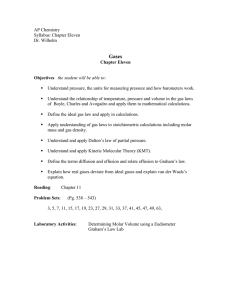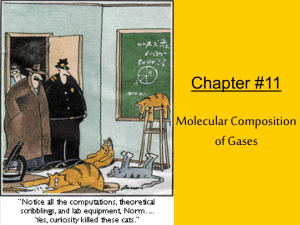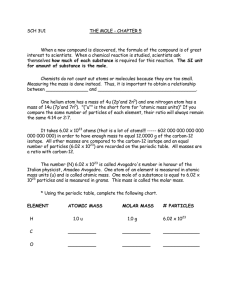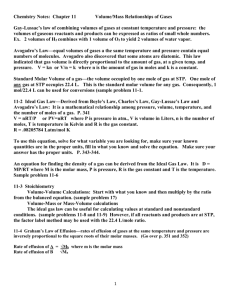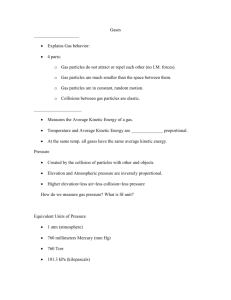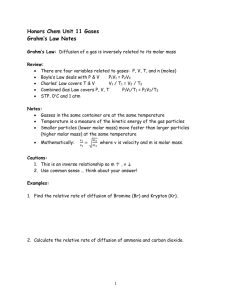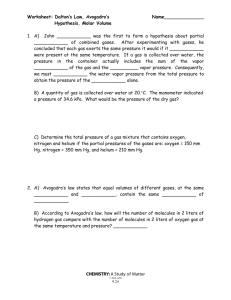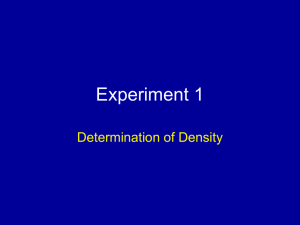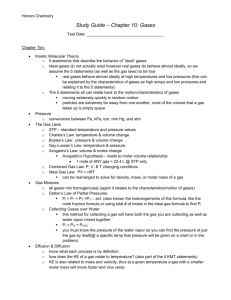Molar Volume of a Gas
advertisement
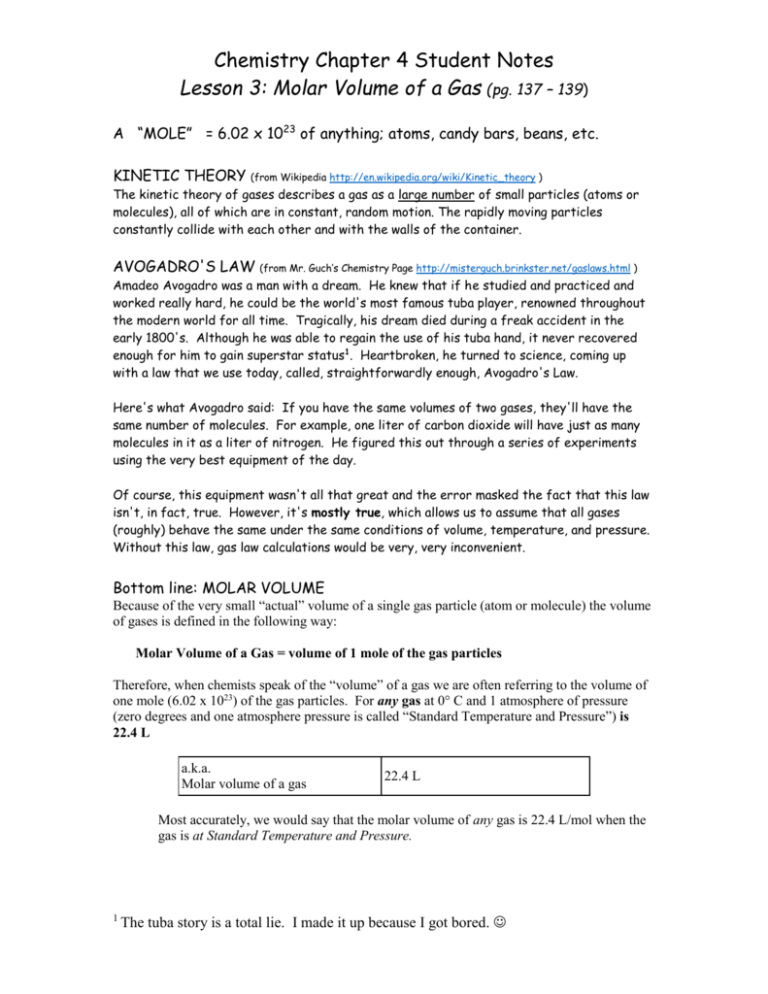
Chemistry Chapter 4 Student Notes Lesson 3: Molar Volume of a Gas (pg. 137 – 139) A “MOLE” = 6.02 x 1023 of anything; atoms, candy bars, beans, etc. KINETIC THEORY (from Wikipedia http://en.wikipedia.org/wiki/Kinetic_theory ) The kinetic theory of gases describes a gas as a large number of small particles (atoms or molecules), all of which are in constant, random motion. The rapidly moving particles constantly collide with each other and with the walls of the container. AVOGADRO'S LAW (from Mr. Guch’s Chemistry Page http://misterguch.brinkster.net/gaslaws.html ) Amadeo Avogadro was a man with a dream. He knew that if he studied and practiced and worked really hard, he could be the world's most famous tuba player, renowned throughout the modern world for all time. Tragically, his dream died during a freak accident in the early 1800's. Although he was able to regain the use of his tuba hand, it never recovered enough for him to gain superstar status1. Heartbroken, he turned to science, coming up with a law that we use today, called, straightforwardly enough, Avogadro's Law. Here's what Avogadro said: If you have the same volumes of two gases, they'll have the same number of molecules. For example, one liter of carbon dioxide will have just as many molecules in it as a liter of nitrogen. He figured this out through a series of experiments using the very best equipment of the day. Of course, this equipment wasn't all that great and the error masked the fact that this law isn't, in fact, true. However, it's mostly true, which allows us to assume that all gases (roughly) behave the same under the same conditions of volume, temperature, and pressure. Without this law, gas law calculations would be very, very inconvenient. Bottom line: MOLAR VOLUME Because of the very small “actual” volume of a single gas particle (atom or molecule) the volume of gases is defined in the following way: Molar Volume of a Gas = volume of 1 mole of the gas particles Therefore, when chemists speak of the “volume” of a gas we are often referring to the volume of one mole (6.02 x 1023) of the gas particles. For any gas at 0° C and 1 atmosphere of pressure (zero degrees and one atmosphere pressure is called “Standard Temperature and Pressure”) is 22.4 L a.k.a. Molar volume of a gas 22.4 L Most accurately, we would say that the molar volume of any gas is 22.4 L/mol when the gas is at Standard Temperature and Pressure. 1 The tuba story is a total lie. I made it up because I got bored. Chemistry Chapter 4 Student Notes – cont’d “FYI” Right now we will do all calculations at “Standard Temperature and Pressure” which is 0C (freezing cold!) to keep our calculations simple. However, in real life laboratories is closer to 25 degrees C (which is about 75 degrees F). In a few weeks when we do calculations involving gases, we will be using the “Kelvin” scale of absolute temperature to correct for the actual temperature

